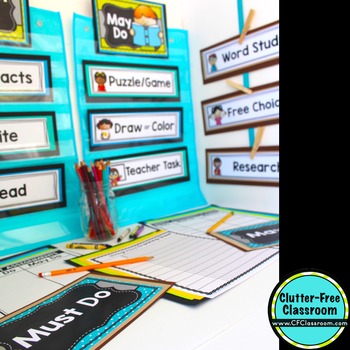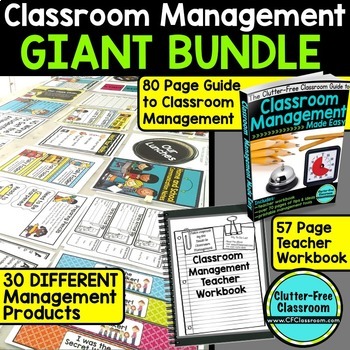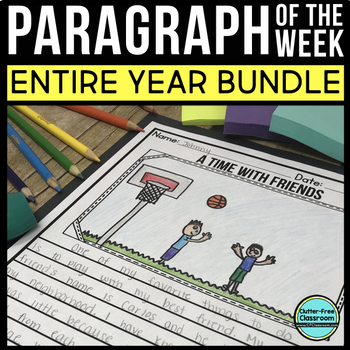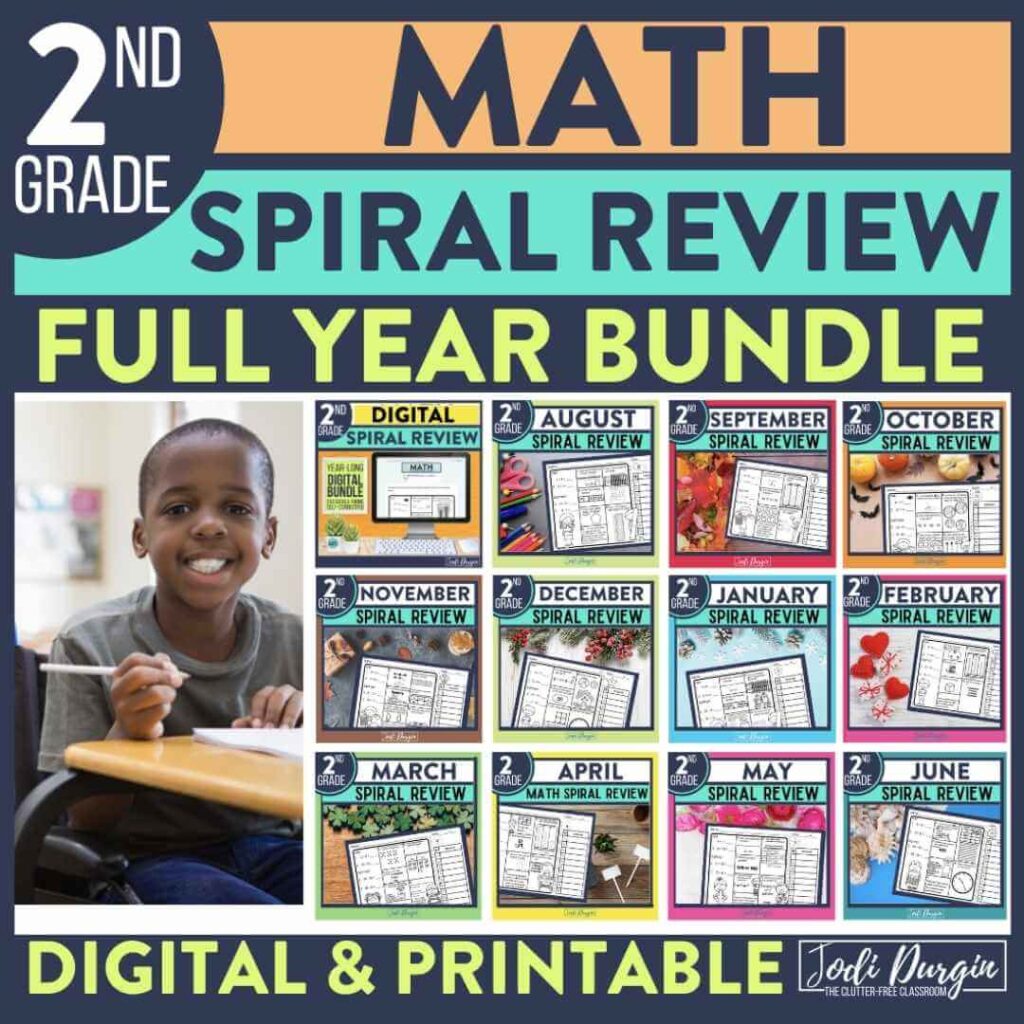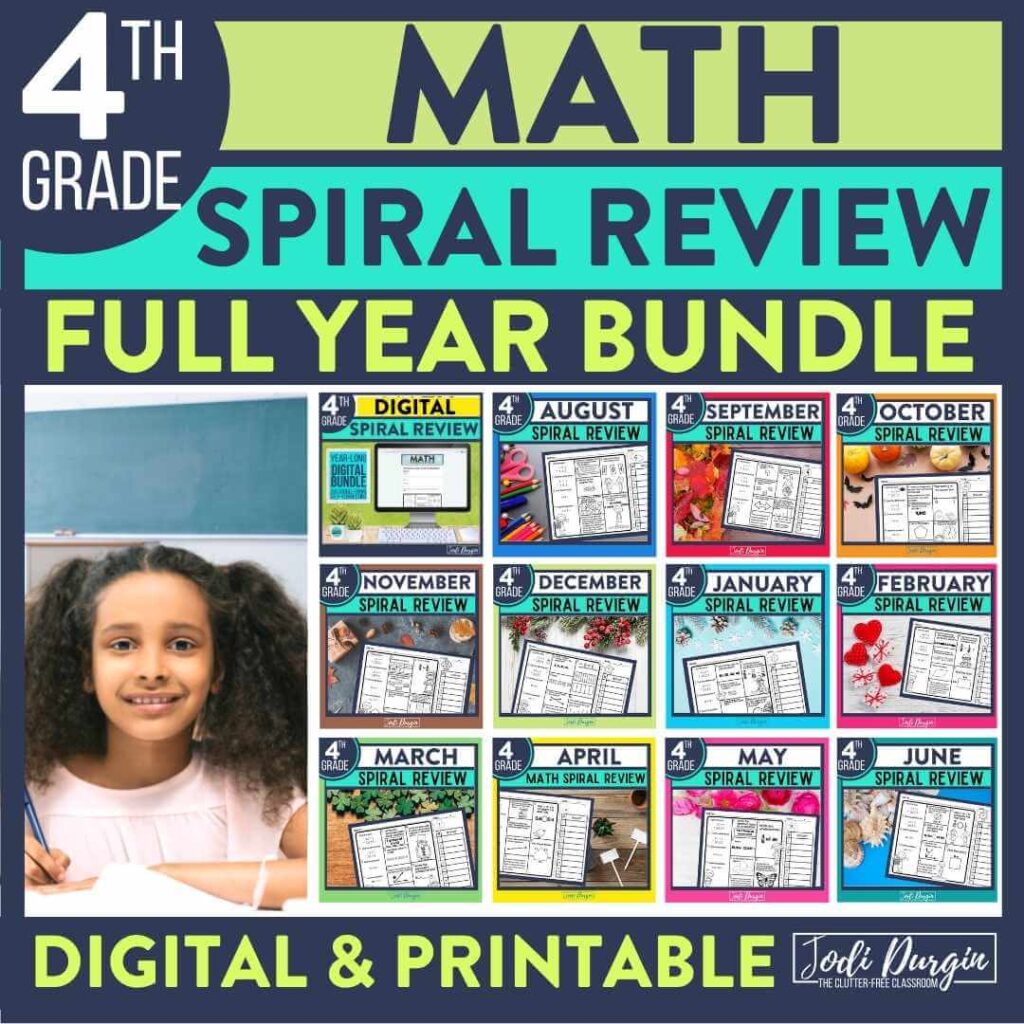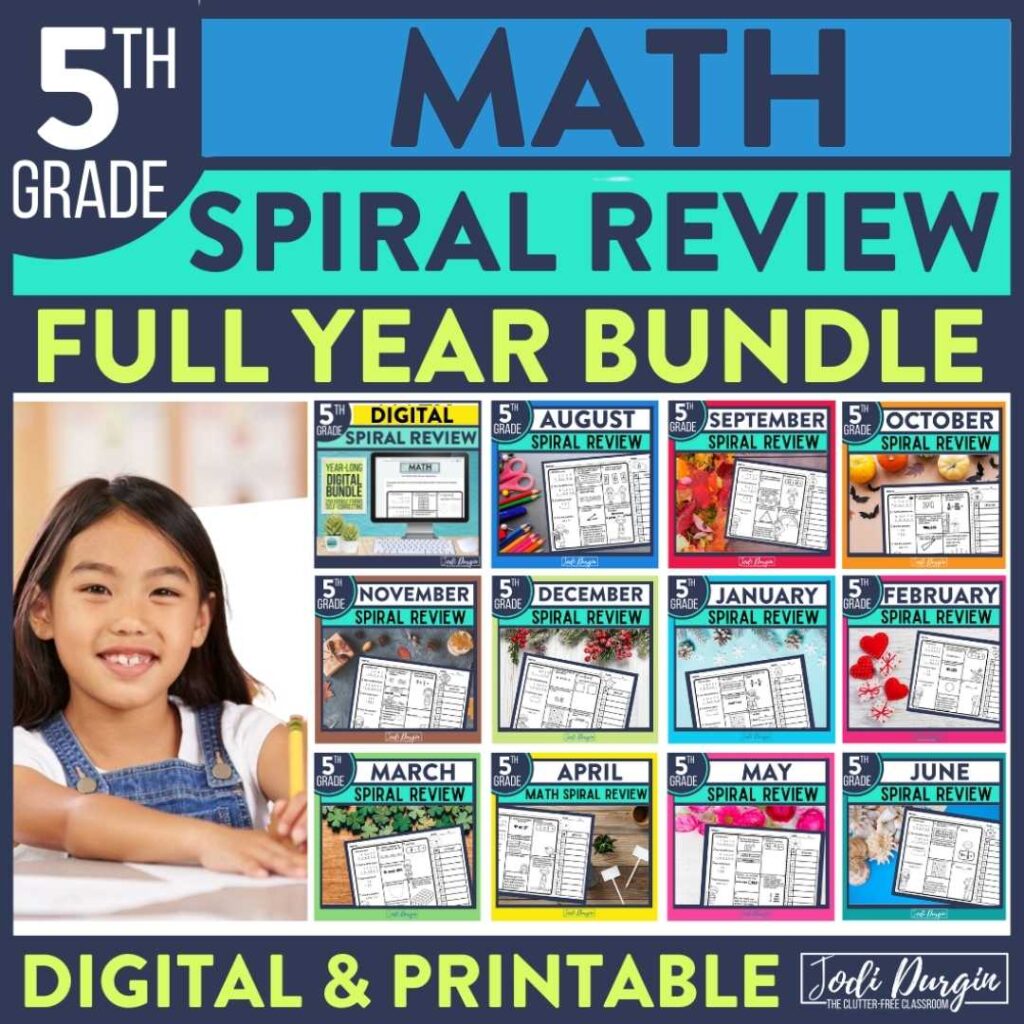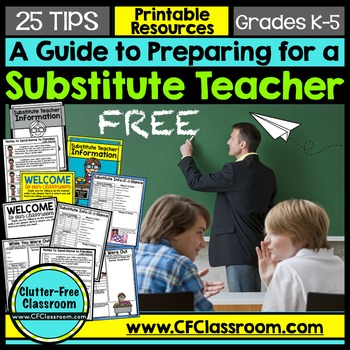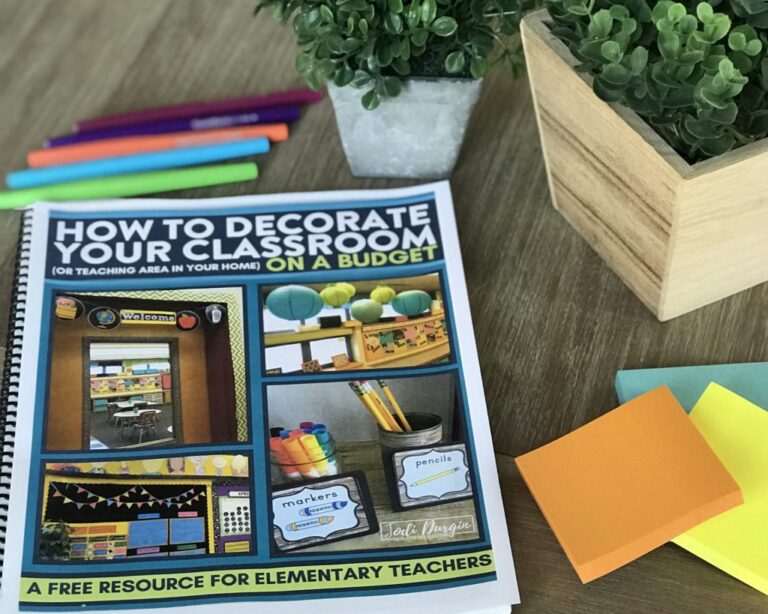If you are looking for tips for preventing teacher burnout, then you found the right place!
Teacher burnout and job stress-related illnesses for teachers have become problematic. Have you had doubts about your decision to become a teacher? Do the increasing demands and daily challenges leave you questioning how much longer you can stay in the profession? You are not alone.
There is too much to do and not enough time to do it. Every time a new initiative, assessment, report, or curriculum was given to us, a former colleague of mine used to always ask, “What can I take off my plate now that you are adding this?” She was never given an answer. Most new things are not replacements, but rather additions to the workload. This overload can cause symptoms of teacher burnout. The question is: What strategies are there for preventing teacher burnout? Read below to get strategies for preventing teacher burnout that will help keep you in the career you once loved.
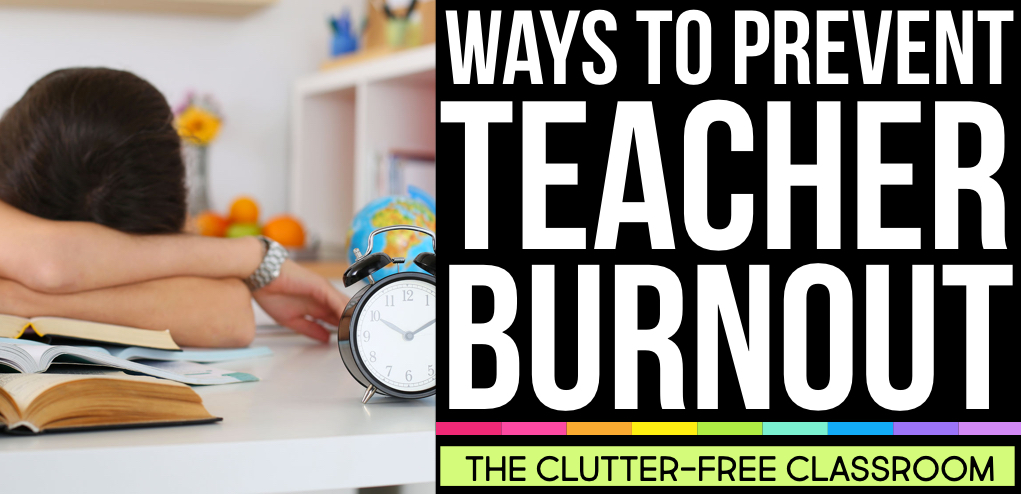
What is Teacher Burnout?
Teacher burnout is one of the most common reasons that teachers are leaving the profession. It is a state of chronic stress that persists over time. Burnout leaves teachers feeling exhausted, overworked, cynical, detached, ineffective, and depleted. It can affect any teacher regardless of their experience level of passion for their job.
Teacher burnout is being described as an epidemic. Teacher stress is higher than ever before. As the demands on teachers continue to rise, educators of all grade levels are struggling. They are finding themselves suffering from emotional and physical consequences. There are steps you can take both in and out of the classroom. These will prevent teacher burnout, decrease stress, and help you enjoy the important work you do even more.
What are the Signs of Burnout in Teachers?
Below are the most common signs or symptoms of teacher burnout.
- stress
- anxiety
- physical symptoms
- irritability
- fatigue
- a lack of interest in job-related tasks
Why are You at Risk for Teacher Burnout?
For most, teaching is not a job… it’s a calling. Unlike some careers, nobody goes into teaching for the money or as a stepping stone to a higher level position. I’m guessing you became a teacher because of the way one of your teachers impacted your life. It might have been because you had role models in your life who were teachers. It could also be because you love working with children and helping others. Any of those reasons say a lot about you as a person.
You want to make a difference in the lives of individual children and perhaps on the world as a whole. You are passionate about your work and feel a moral duty or a sense of obligation to do it well. At the same time, it’s near impossible to do your job without going above and beyond the call of duty.
You work long, unpaid hours. Your best-laid plans often get derailed by unexpected curve balls on a daily basis. Even if things were progressing flawlessly, the reality is you have more responsibilities than you even realize. Teaching is not a 9-5 job. You care about your students. Their successes and challenges feel like your own and that doesn’t stop at dismissal.
Unless you are purposeful and diligent about protecting your personal time, the job will creep into your nights and weekends. Going to work sick because it is easier than creating sub plans feels normal. Putting your students before your own children and your job before your health feels normal. This compounds until teachers reach the point of burnout.
I spent 17 years working as a public school teacher and saw the transitions firsthand. What concerns me most is the increased rate at which qualified, caring, talented teachers are leaving the field. It’s because of the stresses the job brings. It used to be that as teachers neared retirement they showed signs of job fatigue. However, now federal data reports that almost 20% of new teachers leave the profession within four years.
What upsets me even more though are the teachers who don’t leave. They continue to let the job chip away at them day after day, year after year. I recently surveyed over 100 elementary school teachers and 73% reported that they would leave teaching if they could. 64% stated that they would have chosen a different profession if they knew then what they know now.
Teaching is hard. So what do we do? How do we prevent ourselves from getting teacher burnout? Below are some tips for how to prevent teacher burnout. Read them below!
How Can You Prevent Teacher Burnout?
Unfortunately, there are many higher level contributing reasons for teacher burnout that you can not easily change. However, you can find solutions to many of the problems that are risk factors to you personally. The good news is that you can be proactive in preventing teacher burnout. You can even reverse the effects if you are already feeling it. Read the strategies for preventing teacher burnout below!
1. Learn to Say No
Truth: You already have more to do than is realistically possible.
Do not add to that list by taking on additional responsibilities and tasks, joining extra committees, or attending unnecessary professional development and training, tasks or obligations than is required. Teachers are asked to do a lot of things in addition to the general expectations of teaching, prepping, and correcting.
While many things can be very beneficial, others can simply spread your time too thin. It is important to become involved outside the classroom, but it is better to excel in one or two areas than be adequate (or worse) in many.
Get in the habit of responding to such requests (even small tasks) in one of two ways:
- If you know you can’t do it or simply don’t want to do it, then just say no immediately.
If you are not comfortable being so dismissive, then always respond with, “I will look at my schedule and responsibilities to see if I will have the amount of time it takes to ___ and will let you know ___.”
When using the latter approach, be clear on when you will give a definitive answer and make sure it is in a short amount of time. Next, truly look at your schedule and your to do list for the time frame the request involves. Analyze if what is being asked is feasible in conjunction with your other personal and professional commitments.
Then ask yourself the following questions:
- Does it greatly benefit the students?
- Will you take something valuable away from it?
- Can it be added to your teacher evidence binder or earn PDPs towards recertification?
- Will doing it/not doing it impact your teaching status?
- Is it a task that you can do quickly, but will greatly help someone else?
Also, think about why the request was made. Do you possess a skill that others don’t? Is there someone better or equally qualified for the job? Are you simply known as someone who always says yes?
Keep in mind that just because you may currently have time available to do something, you may not in the future and take that into consideration when making your decision. This is especially true for agreeing to participate in committees that meet throughout the year. It may seem feasible at the moment, but as the months go on you may have much more on your plate. Look at the big picture.
Finally, while you are not always obligated to provide a reason for saying no, it is usually a good idea to share your reasoning with something like…
- “I appreciate you asking, but I have too much on my calendar right now.”
- “Thank you for thinking of me, however, I am overcommitted at the moment.”
- “I wish I could help, but I currently have too much on my schedule to allow me to properly…”
2. Prioritize Your Tasks
Truth: it will never all get done.
If you are a teacher you will never EVER be the proud owner of a blank to do list. It simply is not possible. Sure we can chip away at those “in your face” things that have official deadlines like report cards, lesson planning, returning parent emails, etc., but the bottom line is there will always be a million and one other teacher-related tasks cluttering your mind. However, by prioritizing your responsibilities and being willing to let go of tasks that aren’t necessary, you will have a stronger feeling of accomplishment and be less overwhelmed.
I do a lot of work coaching teachers and helping them to organize their classrooms. One of the best tips I have when doing so is to make purging anything that does not need to be in the space a priority. Simply put, the less you have, the less you have to manage. The same is true for your never-ending to-do list as a teacher.
Typically teachers write out a to-do list that sequentially lists tasks as they come to mind. While this is done in an attempt to achieve a sense of accomplishment and ensure the work gets done, it can also be a method of setting yourself up for failure and increasing the feeling of being overwhelmed at all times.
In my classroom, I had great success helping students manage their assignments with a “Must Do / May Do” Board. The board simply lists the things that are not a choice and need to get done as well as the options for things to do when the “must dos” are completed. It not only transformed my students’ workflow, enabled them to take more responsibility for themselves, and made our school days run much more smoothly. It also completely changed the way I approached my own “must dos” vs “may dos.”
Instead of simply jotting down EVERYTHING you feel needs to get done, try listing the tasks in a three-column format.
- In the left column, list the items that you must complete (report cards, lessons plans, etc).
- In the middle column, record the things that you should (change a seasonal bulletin board, clean out a filing cabinet, etc) do.
- The right column is for a list of things you would love to do, if you had the time.
Writing the list this way will force you to prioritize things right from the start and will make it easier for you to focus on what is most important and perhaps even eliminate some things that just aren’t necessary.
Be kind to yourself and learn to embrace the fact that there will always be something that should get done. The key is determining what needs to gets done immediately and what you can just let go of.
The Must Do May Do Board can also be found in my Classroom Management bundle.
3. Delegate Tasks
Truth: Others are capable and willing to help you.
I get it. I am a Type A personality and really struggle with passing on work to others. But there are so many things you do not have to do or should not be doing. Remember that three-column to do list I suggested you make in the last section? Let’s take it a step further and not only decide what need not get done, but also what we can farm out to other people such as parent volunteers and even your students.
Take the items from your list and break them down even further into one of three categories.
- Write down all of the things you have to do yourself. This would include items like student report cards, assessing your class, and communicating with your students’ families.
- Next, make a list of things you could have another adult do for you. This would include making copies, prepping materials, laminating and cutting out lamination, repairing classroom books, processing and distributing book club orders, and so much more.
- Finally, list out all the things students (either current or former) could be doing for you.
To be clear, I am not recommending you utilize instructional time to have your students serving you as worker bees, but helping you before or after school prepare materials and maintain an organized classroom is beneficial to them in so many ways. It provides an opportunity for them to connect deeper with a caring adult, it teaches them organizational skills, and it gives them a sense of pride in helping others. Kids are great for sorting your manipulatives, putting papers in order, collating homework or morning work packets, organizing your classroom library, taking down bulletin boards, etc. If you teach a younger grade, you could ask former students to help you or recruit student council members or older grade level students to assist you.
4. Focus on Consistency
Truth: Concrete procedures and expectations coupled with familiar tasks will make your classroom run like clockwork.
Providing students with a structured environment, a visual schedule, and consistent routines allows children to feel a sense of security which will increase their ability to attend to tasks, improve behavior, and be more independent in all aspects of the school day. This will in turn make your day productive and enjoyable. It will allow you to focus your energy on instruction instead of putting out fires and feeling the frustration that comes with needing to repeat yourself over and over. If you feel you would like to improve in the area of classroom management, I welcome you to explore all the helpful tips and ideas I have available on the topic.
In the same way that concrete routines help the classroom run itself, providing consistency in learning activities will also decrease a lot of the stresses that can occur in a classroom. Frequently giving your students varied types of assignments requires them to constantly interpret new directions. It puts their focus on interpreting expectations and takes away from the actual academic skills you want them to work towards mastering. Too much instructional variety also requires you to shift gears in your planning and instruction and requires far more time to prepare materials.
By seeking quality instructional activities that provide skill practice, in combination with familiarity, you will be saving yourself a great deal of time. You can prepare the materials for many lessons at one time, and have all of your copies made well in advance. You can establish routines for assessing their progress using these activities.
When students have seen the format multiple times, they no longer need to receive clarification of what to do. By eliminating the need to restate instructions and instead providing them the tools to be independent, you are freed up to focus on small group instruction targeting specific skills. This is especially helpful when using a math workshop model with guided math.
Finally, when you intentionally use similar activities and task formats, your students’ family also become familiar with them which saves you even more time and stress by eliminating phone calls, notes, and emails from parents who need to have assignments or grades explained to them.
I desperately saw the need for this in my own classroom and created resources specifically to solve the problem I was facing of constantly needing to support my students in understanding the expectations of a task more than the actual skills the task was designed to improve. I was thrilled with the results I experienced firsthand and am so proud to know that they have now helped thousands of other teachers in the same way.
3 Resources to Help You Build Consistency in Your Instruction
Below are 3 resources that will help you with consistency and preventing teacher burnout.
1. Paragraph of the Week
Paragraph of the Week provides a systematic method of working through the writing process from start to finish and provides clear expectations and guidelines for drafting quality writing. Each week, the students follow a different prompt to compose a writing sample using the same format and guidelines. It is amazing to see the progress they make over time. Parents and teachers both report loving the fact that the Paragraph of the Week format clearly documents their growth as writers over time.
2. Spiral Review Math Activities
The daily spiral review math Pages have been used as homework, morning work, and as independent work during math workshop. Each page offers ten problems in a familiar format and features a spectrum of math skills. In addition to the benefits of consistency and ease of use by the teacher, these pages have received praise for greatly decreasing the need to dedicate instructional time to test prep in the spring and have enabled children to demonstrate proficiency in skills they may not have been developmentally ready to master earlier in the year when they were first introduced.
Check out the spiral review math activities for your grade level:
- 1st Grade Spiral Review Math Activities
- 2nd Grade Spiral Review Math Activities
- 3rd Grade Spiral Review Math Activities
- 4th Grade Spiral Review Math Activities
- 5th Grade Spiral Review Math Activities
3. Open-Ended Reading Activities
Reading Graphic Organizers are loved by teachers because of their flexibility. I’ve designed a collection of organizers that not only cover every fiction and nonfiction reading comprehension skill, but are also a great resource to use as a prewriting tool to organize their thoughts. Each of those organizers is included featuring a comprehensive list of monthly and seasonal topics and can be used with absolutely any book, story, article, etc.
5. Put Your Health First
Truth: Your health should always come first.
Too often, teachers come to work sick instead of resting and letting themselves get better. Be sure to have comprehensive substitute teacher plans on hand as well as purposeful materials prepared and ready at all times.
I will not go into detail here because I do have a very detailed Free Guide to Preparing for a Substitute Teacher. It not only walks you through the process of preparing sub plans and materials, but it also includes free printables. I encourage you to download that free resource.
How Do Teachers Deal With Burnout?
You may already be feeling burnt out. If you are past trying to prevent teacher burnout, here are some steps you can take to improve the situation.
1. Reflect on your Classroom Management Strategies
Begin by reflecting on your classroom management strategies. When you implement consistent procedures and routines your classroom will begin to run itself which will greatly decrease behavior problems and make your days more enjoyable.
2. Simply your Workload
Next, think about ways you can simplify your workload while still ensuring your students’ success. One of the greatest changes I made was switching to a nightly homework routine that eliminated my need to plan and prep assignments each and every day. By creating weekly homework packets of spiral review math assignments my students and their families knew exactly what to expect and the constant review of grade level skills saved me tons of time in needing to reteach forgotten concepts later in the year.
In addition to the spiral review math practice, the students each completed a nightly interactive reading bookmark and worked on a paragraph of the week assignment to improve their writing skills. I alternated Narrative Paragraphs and Opinion Paragraphs as weekly homework and would have them do the opposite in class each week during Writer’s Workshop.
These writing tasks, in conjunction with our monthly writing prompts provided such consistency and routine and really lightened my workload.
3. Collaborate with Colleagues
The people you work with should provide a support network to you. If specific students are causing you stress, reach out to your social worker or their former teacher. They often have strategies that you may not have thought of.
If it is the workload, try teaming up with grade-level teammates. Divide up tasks such as copying and prepping for each subject area. If it is simply a matter of too many things to do then perhaps talking with your administration could help. Being open and honest can go a long way.
Finally, the best thing you can do is take control of your situation by finding ways to simplify your life and be proactive in managing the daily stressors in your life.
4. Implement Relaxation Techniques
Use these teacher relaxation ideas outside of the classroom. They are great ways to manage your stress on a regular basis. You are sure to find a few that fit your needs.
5. Organize your Wardrobe
The tone of your entire day is set from the moment you get out of bed. If you experience chaos before leaving your house, you are going to be taking that stress to school with you and will not be in the right mindset to tackle the curve balls thrown your way.
Taking the time to organize your closet, streamline your wardrobe and develop habits for picking out your outfits in advance will make your mornings run much smoother. The post Teacher Outfit Tips to Save Time Each Morning will make it easier.
6. Meal Prep on Sunday
The other way to not only make your mornings stress-free is to be prepared in the kitchen. The tips in this post about Fast, Quick, and Healthy Food Ideas for Busy Teachers has added benefits as well. It will save you time and money. It will also help you eat healthier.
7. Streamline How You Shop for Groceries
Speaking of saving money and eating healthier… Stopping at the grocery store after a full day of teaching is a guaranteed way to come home with a pint of Ben and Jerry’s and a package of Oreos to wash it down. Your time is too precious to waste it walking the aisles and filling a cart with consumables. This post about Grocery Shopping for Teachers addresses some challenges and gives you solutions to make the process quick and painless.
8. Focus on Developing Healthy Habits
We all have reasons we want to get and stay healthy. As teachers, it’s important that we take care of ourselves so we can be there for our students when they need us. In order to be healthy, we must develop healthy habits, which can take a while to master. When reading the post titled, Teacher Health and Wellness Ideas That Are Easy Enough to Actually Do, you will find some tips on what it really requires to be considered healthy and how you can develop these healthy habits to be your best self.
9. Create a Financial Plan
Nobody goes into the profession because of the salary. Many find themselves asking, “How can I earn extra money as a teacher?” This comes out of necessity and not greed. Unfortunately, finances are also a leading cause of stress and anxiety for teachers and some feel pressured to leave teaching to take higher paying positions. While I can’t increase your teaching salary, I do have some great tips (that I have personally used with success to live debt free) that will help you stretch your teacher paycheck further than you ever imagined. You can read about those in the How to Live Well on a Teacher Salary Using 10 Easy Strategies article.
10. Create a Teacher Emergency Kit
When you are in a stressful situation, (getting ready to present at open house, welcoming parents to conferences, or speaking at a meeting) you do not want to worry about a run in your tights, bad breath, or a headache on top of everything else. As teachers, things like broken nails or lunch forgotten on the kitchen counter at home can’t slow us down. Therefore, having a “Teacher Emergency Kit” in your classroom desk or closet is essential. These also make great gifts for your colleagues or your own child’s teacher.
In closing, teaching is not going to get any easier, but with proactive measures, you can prevent teacher burnout and instead be the effective and caring teacher you were called to be.

